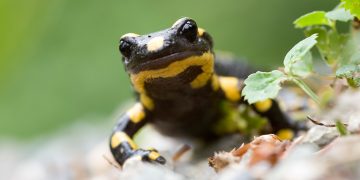A Guide to Owning a Gecko
Many lizards make great pets, but gecko lizards in particular are a good choice for the variety of breeds available. There are over 2,000 known species of geckos worldwide, varying widely in color and size. The most common types for pets include the leopard gecko, the tokay gecko, the house gecko and the crested gecko.
Geckos are also one of the most popular lizard pets because of their easy disposition and low-maintenance nature. Leopard gecko care is among the easiest in the lizard world, making them the most frequently chosen breed, with house geckos following closely behind.
Origins and Natural Habitat
Geckos are plentiful in tropical climates and are scattered all over the world, from the United States to Australia to India. Their specialized toe pads give them the ability to stick to surfaces, so they're often found climbing, and their desire for warm temperatures often leads them to take up residence in rock crevices, sheltered areas and even people's homes.
Appearance and Characteristics
Size: The world's smallest gecko species is the 16-millimeter-long Jaragua Sphaero, while the largest ever found was the 60-centimeter-long Delcourt's gecko.
Markings: Because of the range of species, gecko markings are too plentiful to name. One attribute all geckos share, however, is the lack of eyelids. Geckos use their long tongues to moisten the membrane on their eyeballs.
Behavior
Geckos are typically docile and are easy to tame. They do well with company (other geckos) and can be handled easily. As a natural defense against predators, they will drop their tail, so you should never pick up a gecko by the tail. Should its tail come off, be sure to separate the gecko from other geckos until the tail has grown back.
You May Also Like:
Related Search Topics (Ads):
Health and Care
Feeding: Captive geckos primarily eat crickets so long as they are no bigger than their head. Feeding depends on age and size, but in general, you shouldn't feed a gecko more than they can eat in 15 to 20 minutes. Other foods include mealworms, fruit flies, wax worms and even one-day-old mice, but these should be offered sparingly.
Housing: Three average-sized geckos can generally live comfortably in a 32-inch by 15-inch by 15-inch tank. The tank should be heated to roughly 88 degrees Fahrenheit in the day and then cooled to roughly 75 F at night. Line the cage with bark or reptile sand and provide your gecko with a water bowl, hide boxes and real or fake plants.
Health Concerns: Geckos have the same general health problems as snakes and other reptiles — namely parasites and shedding. Parasites can be avoided by keeping the gecko's cage clean and ensuring it has quality food. Shedding can be aided by misting the tank to keep it moist and ensuring that all skin is removed after the shedding process is complete.
Life Expectancy: Geckos typically live between 7 and 10 years, but in rare cases, they have been known to live beyond 20 years.
Finding Geckos for Sale
You can find tokay, crested, house and leopard geckos for sale from breeders or at pet stores. Prices generally range between $60 and $250 for an adult gecko depending on color, pattern and gender. It's best to avoid geckos that are dull in color or are lethargic. Look for geckos with bright eyes, a plump tail and skin that is free of abrasions or signs of shedding.

